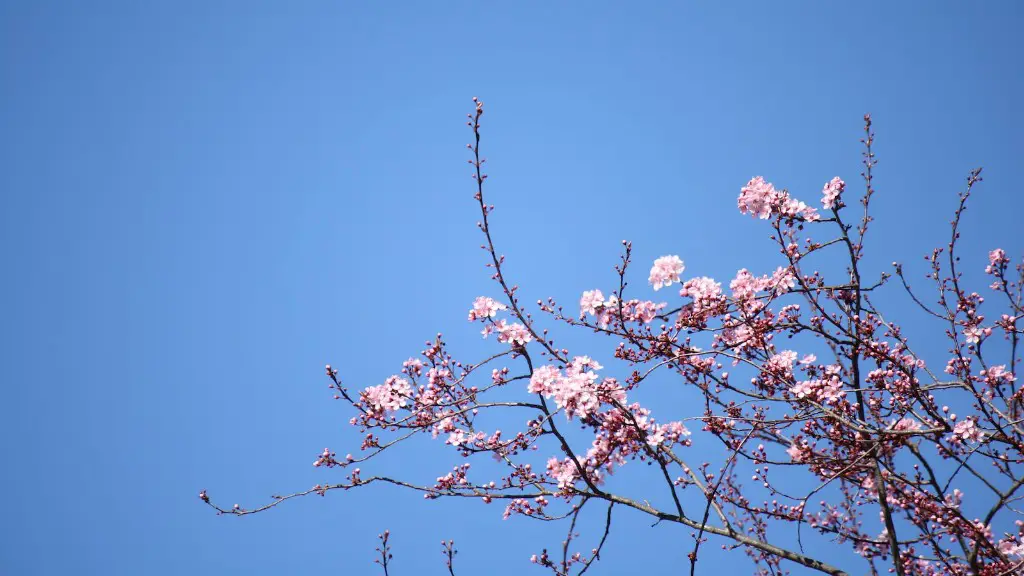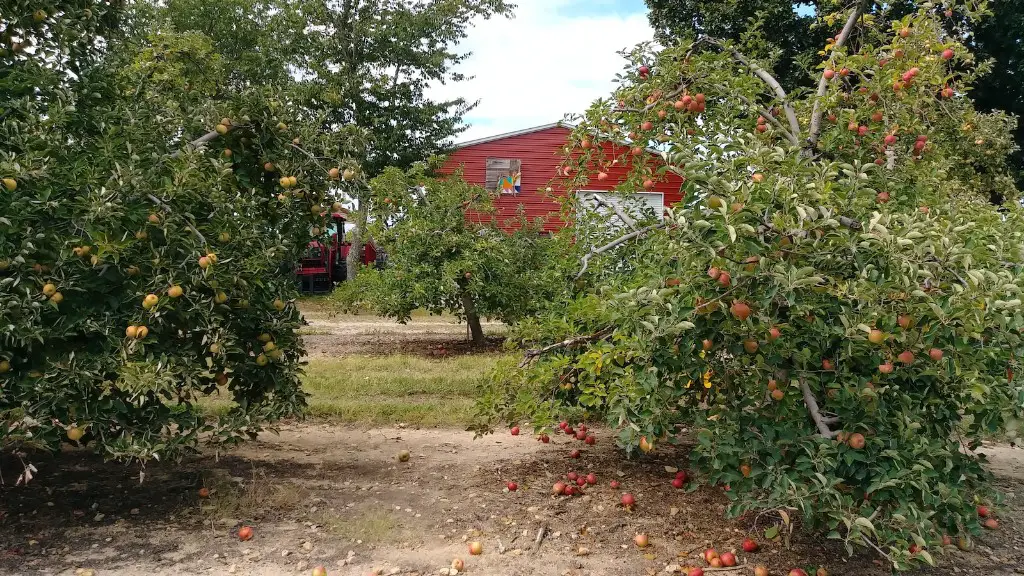Materials and Time Required
Weeping cherry blossom trees are attractive additions to any garden, providing a burst of color in springtime and a lush branch canopy overhead. Planting one of these trees may seem daunting, but with the right materials, time and patience, it can be done with ease.
Before getting started, it is important to gather all the necessary supplies. A tree with a healthy root ball is necessary, which can be purchased from a local nursery or garden store, along with a bag of topsoil, root stimulators, and a gallon of water. A shovel and a garden trowel are necessary tools for digging and planting. This project will take between 30-60 minutes, depending on the exact size of the tree and the soil being worked with.
Choose an Ideal Location
Once the supplies are ready to go, it is important to choose an ideal location for the new tree’s home. Weeping cherry blossom trees should be planted in places with plenty of direct sunlight, as this will encourage healthy growth and the most vibrant blooms. If the tree will be placed near a larger structure or building, ensure it is at least 8 feet away in order to maximize air flow and sunlight.
It is also important to consider the size of the tree when selecting the planting site. Research the expected growth rate of the tree and consult with an arborist or garden expert if needed. If the tree is likely to become large with full maturity, it’s best to avoid planting near power lines or other obstacles that may obstruct its growth.
Dig and Prepare the Site
Once the tree’s location is chosen, begin the process of digging and preparing the site for planting. Make sure to wear garden work gloves when doing this step and use the shovel to dig a hole twice the size of the root ball. Gently separate and loosen the packed dirt from the sides of the hole to make it easier for the tree roots to spread throughout the soil.
When the hole is ready, fill it partway with the bag of topsoil and mix it in with the existing soil. Sprinkle a root stimulant over the topsoil and water it in with the gallon of water. This will ensure the tree has the right nutrients and minerals for healthy growth.
Planting the Tree
Lift the tree from its container and place it in the hole. Adjust the root ball until it is even against the sides. Fill up the hole again with the topsoil and the extra soil from the digging. Place a thick layer of mulch around the tree, but make sure to keep at least 1 foot of space between the trunk and the edge of the mulch. This will minimize the risk for mold build-up and pest infestations.
Use the trowel to make a shallow trench around the circumference of the tree, ensuring the trench is two feet away from the trunk. This helps channel water directly towards the tree roots. Finally, fill up the trench with water – this helps settle the soil and further encourage root growth.
Care and Maintenance
Weeping cherry blossom trees do need regular care in order to ensure they are growing healthy and vibrant. The primary care requirement is to ensure it is getting enough water. In general, trees need watering at least twice a week, at least during periods of drought with little rainfall. If the soil is too dry, it can take longer for the tree’s new roots to take hold.
It is also important to regularly check for any pests or damage to the branches. If noticed, take the necessary steps for removal and recheck the tree a month later for any new damage. If the cherry tree is growing fast and is looking a bit unmanageable, trim and shape it as needed to promote healthy growth.
Fertilizing and Mulching
Finally, fertilizing and mulching are both important upkeep tasks that help promote healthy growth in Weeping cherry blossom trees. In early spring, a low-nitrogen fertilizer can be applied to the soil to encourage blooming. Having said that, remember to read the instructions on the fertilizer carefully and stick to the recommended quantities, as applying too much fertilizer can defeat the purpose and lead to nutrient burn.
The mulch should also be regularly restocked after periods of heavy rain or as the season progresses. This helps create a layer of insulation to help encourage efficient root growth, encouraging the water and air to better penetrate the soil. When it comes to mulching, a 2 to 3-inch layer around the trunk is ideal.
Watering Regimen
Having a consistent watering regimen is vital for the health of a weeping cherry blossom tree. This tree species, like so many other types of trees, requires about 1 inch of water per week for the root system to remain healthy and active. It is important to water the tree deeply to ensure all of the roots get the water they need to thrive. Depending on local weather patterns, it may be necessary to water the tree as often as daily during times of drought.
If watering the tree manually, use a hose set on a slow flow setting and slowly water it until the entire root zone has been saturated with water. Use a stick to check the soil a few inches under the ground to make sure the roots are receiving the moisture they need. If it takes longer than 10 minutes to water the tree, the soil may be too compact and need to be loosened.
Disease and Pest Control
Weeping cherry blossom trees can fall victim to disease and pest infestations, like any other species. Keep an eye out for signs of disease, like any yellowing or discoloration of leaves, followed by leaf drop. If encountered, it is important to contact an arborist or a garden expert for help determining the cause and corrective actions.
When it comes to pest infestations, the most common culprits are aphids and scale insects. Both of these types of pests can cause yellowing and discoloration of the leaves, so it is important to check for signs of these pests too. Luckily, these pests can usually be controlled with the help of organic sprays and cans specifically designed for bug removal.
Providing the Right Environment for Growth
Having the right environment for a weeping cherry blossom tree is key to its overall health and beauty. This means making sure the soil is regularly turned, the tree is well-drained, and weeds and grass are managed. These factors help promote steady growth and a healthy canopy of sprawling branches.
In the winter months, it’s important to take extra care of the tree. Ensure the soil is evenly moist and not too dry or too wet. Covering the root zone with a layer of light mulch or straw helps prevent the roots from becoming too dry. Additionally, pruning the tree can help prevent ice and snow from weighing down the branches, creating an attractive winter silhouette.
Staking the Tree
For trees with a shallow root system or those that have recently been transplanted, staking can be quite important. Staking helps provide extra support while the roots take hold of the soil. Place two stakes into the ground a few feet away from the trunk and use strings or loops of fabric to gently keep the tree upright while the roots grow.
However, it is important to avoid staking the tree too tightly, as this can interfere with the flow of air and sap to the various parts of the tree. Additionally, it is important to check on the tree regularly and remove the stakes 6 months after planting.
Protecting the Tree from Frost
It is also important to protect a weeping cherry blossom tree from frost in the winter months. If a cold snap is expected overnight, it’s a good idea to cover up the trunk and root zone with a tarp and pile up straw around the sides. This helps keep a layer of insulation around the tree and helps protect it from the cold.
If a significant amount of frost is expected, extra measures need to be taken. Installing a sprinkler system that can be easily turned on during a cold spell helps promote healthy growth even during times of chill. Sprinkling water over the canopy of the tree helps create a micro-climate and encourage healthy root growth even after a cold spell.


